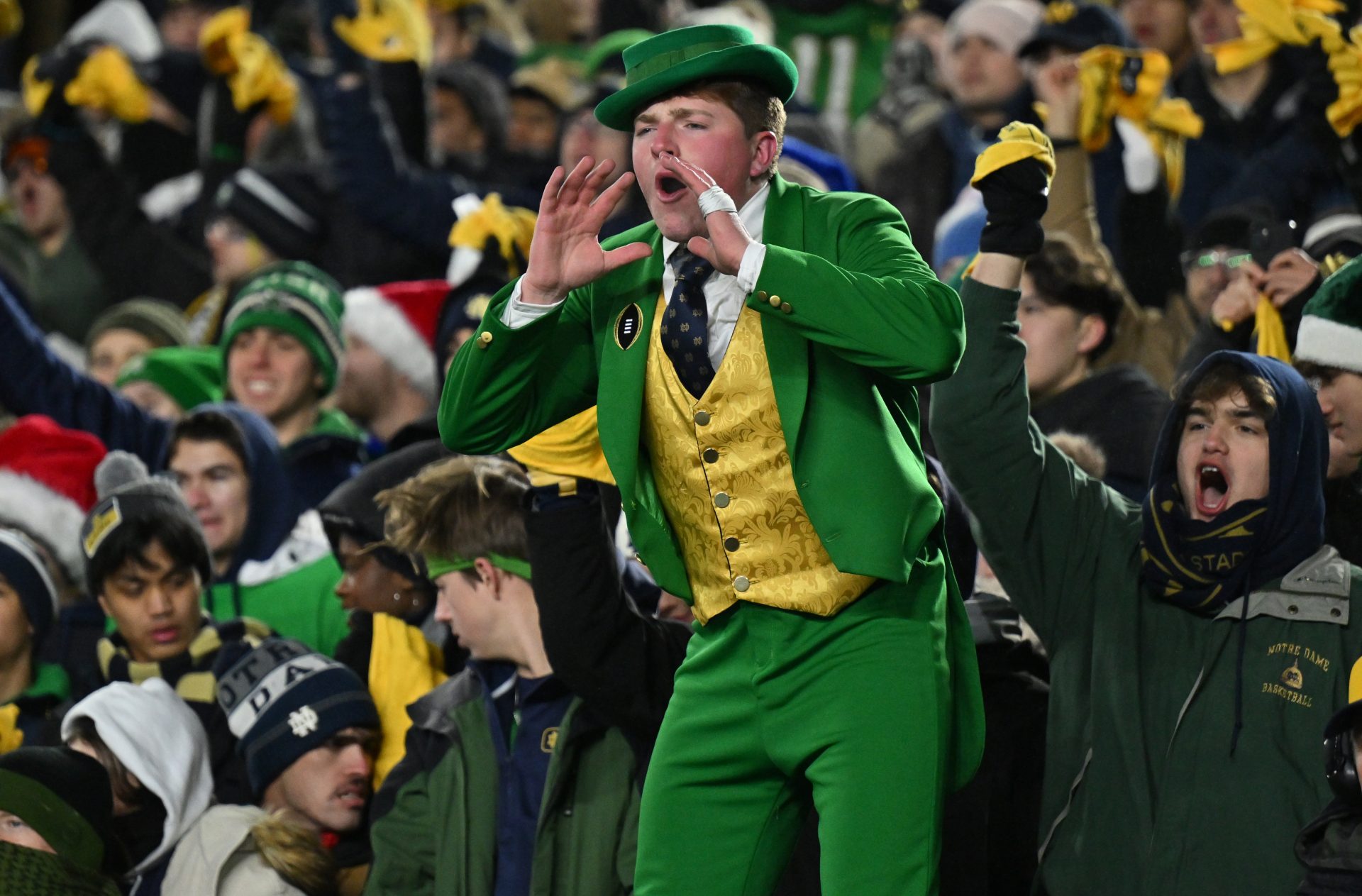The athletic tradition of the University of Notre Dame is combat-tested and intensely proud—and yet little does anyone know about the Leprechaun. That red-headed, green-robed young devil is more than a dancing mascot astride the sidelines. He is undoubtedly the personification of the Irish heritage of tenacity.
Especially the pride that Notre Dame holds dear. How is it that the legend became an emblem of such a tremendous collegiate sporting tradition?

What is the Notre Dame Fighting Irish Mascot?
The Leprechaun is at the heart of it all—a mischievous, spirited icon that brings energy and humor. However, with that comes an unmistakable attitude to each Notre Dame game. He’s not just a typical mascot in a puffy jumpsuit. Instead, the Leprechaun student dons a neat green suit and Irish hat and carries a shillelagh (a vintage Irish wooden fighting club). His mission? It gets the crowd going, agitates team spirit, and keeps the Fighting Irish burning from kickoff to the final whistle.
The Leprechaun you recognize today—all fists up and ready to fight—began life in 1964 as the creation of sports illustrator Theodore W. Drake. Fun fact: he was commissioned for the princely fee of $50 to create the image now emblazoned on helmets, jerseys, souvenirs, and fans’ hearts worldwide.
Years before the Leprechaun shouted cheers, the Notre Dame mascot was a trifle hairier. Since 1930, Irish Terrier canines—actual canines—have represented the university teams. The tradition began when Cleveland entrepreneur Charles Otis donated a pup named Brick Top Shuan-Rhu to the university. A series of terriers named Clashmore Mike continued the work thereafter.
They were sweeter than cute sideline buddies—these terriers were tough, loyal, and hugely popular with the crowd. Clashmore Mike even marched onto the field with the marching band and staked out the university’s published pages. Earlier, the terriers represented Irish toughness.
However, over time, it became clear that the crowd craved a more participatory, crowd-creating presence—something (or someone) that would energize the stands. That evolution came slowly, and by 1965, the Leprechaun was the official mascot of Notre Dame. The dog days were over, and hello to the spirited human form of the Fighting Irish.
Why a Leprechaun, the Fighting Irish?
Notre Dame’s Irish heritage isn’t a marketing slogan—it’s woven into school tradition. The term “Fighting Irish” has multiple etiologies, but perhaps the most famous was the game against Michigan in 1909. According to legend, when Notre Dame was trailing at halftime, one of the players provoked his teammates to action by shouting, “What’s the matter with you guys? You’re all Irish, and you’re not worth a lick fighting!
“The tide turned, and writers then came to refer to them as the ‘Fighting Irish.”
There was one more formative incident in 1919 when noted Irish patriot Eamon de Valera appeared at Notre Dame as part of his drive for Irish independence. His university visit helped cement Notre Dame’s strong identification with Irish-American heritage and codified the nickname firmly.
So why the Leprechaun? Irish legend Leprechauns are clever, spunky, and not to be messed with. They’re emblems of grit and sharp minds—just the ticket for a program all about toughness, perseverance, and never-say-die. The Leprechaun’s fists up and combative stance make him the perfect physical representation of being “Fighting Irish.”
Since becoming an official mascot, the Leprechaun has done much more than wave pom-poms. He’s manned the sidelines of national championship games; he’s cheered thousands of fans on with chants. And with that, he’s been a beaming symbol of Notre Dame’s tradition.
To be the Leprechaun, however, is no trivial pursuit, either—it’s a cutthroat audition that runs students through their paces physically, charmingly, and encyclopedically regarding knowledge about the university and its teams.
KEEP READING: History of the Ohio State Buckeyes Mascot
The Leprechaun is front and center now for Notre Dame game-day entertainment, riling up the faithful at South Bend or a bowl game someplace on the road. So long as there are Fighting Irish to cheer for, you can bet your bottom dollar the Leprechaun will be there—grinning, screaming, and showing the world what it means to wear blue and gold.
College Sports Network has you covered with the latest news, analysis, insights, and trending stories in football, basketball, and more!

